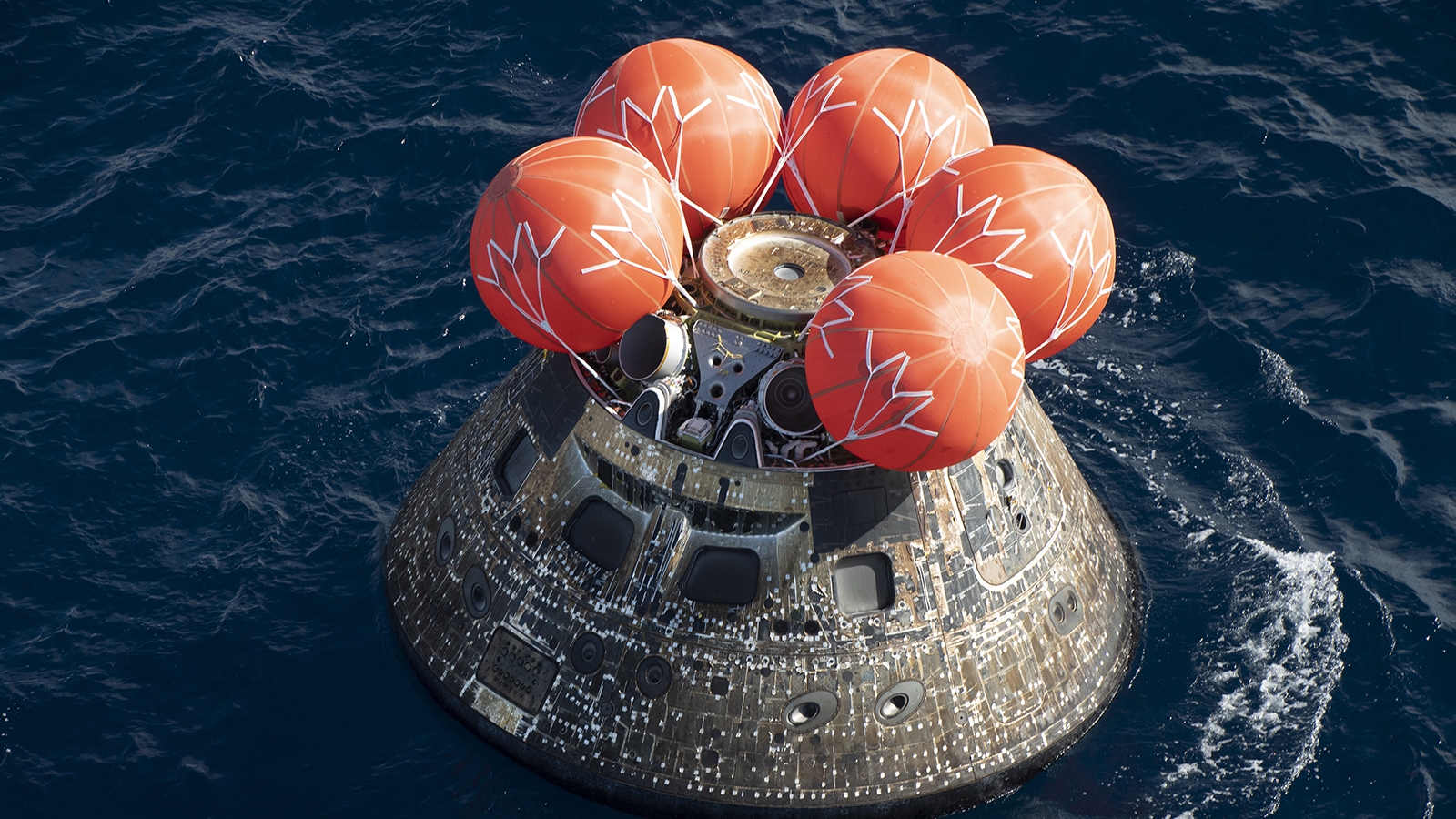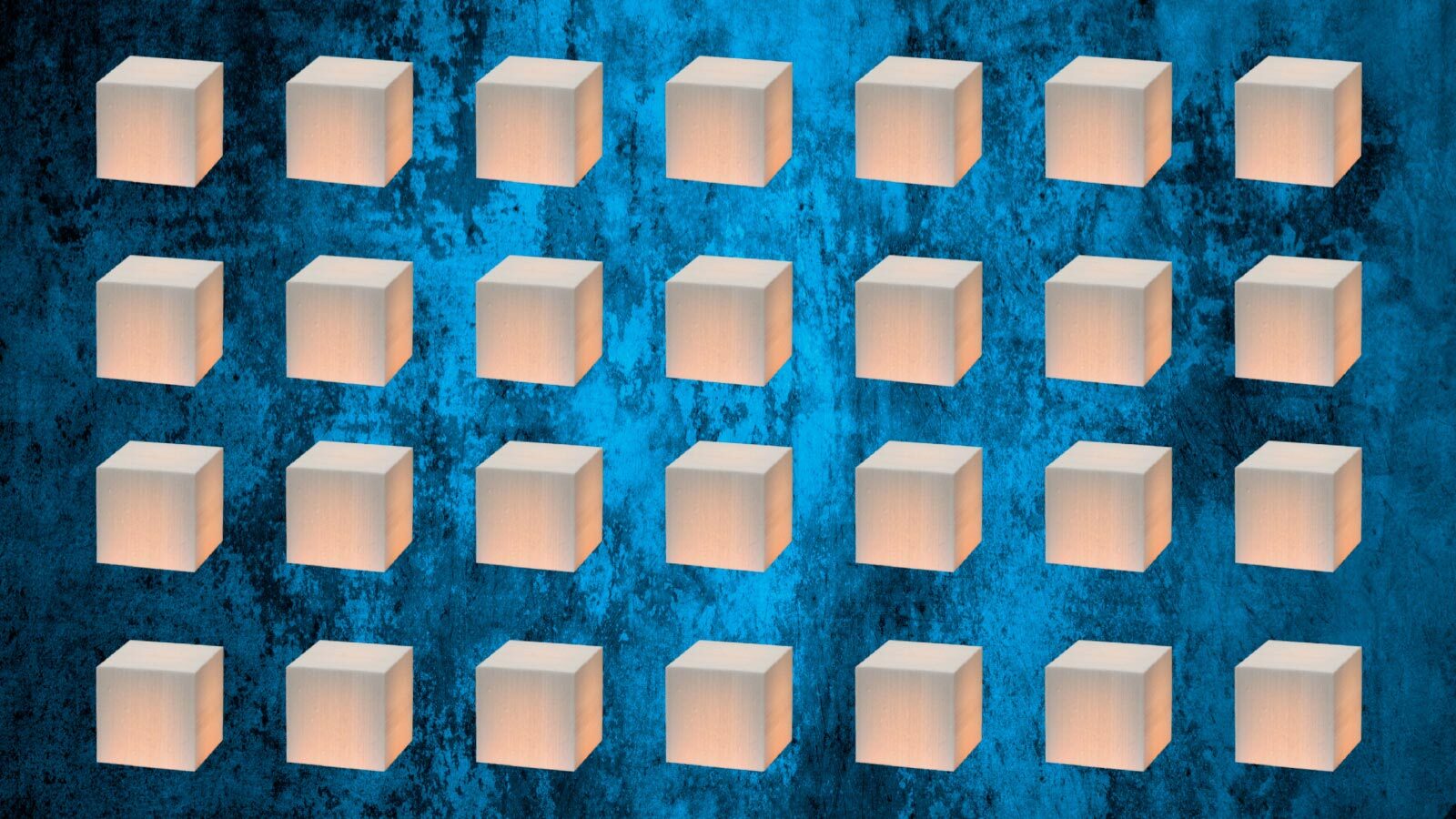Stay Up to Date
Submit your email address to receive the latest industry and Aerospace America news.
For every spacecraft that NASA and commercial space companies want to launch to low-Earth orbit and beyond, thousands of tiles must be manufactured to ensure these vehicles land more or less unscathed from the searing temperatures of plowing into the atmosphere. A Colorado company may have devised a way to make tiles more quickly and more cheaply. Keith Button learned about the upcoming laboratory tests that could be a turning point.
The thermal tiles that protect spacecraft during atmospheric entry have traditionally been made through a labor-intensive process: Aluminum, silica and other oxide fibers are mixed with water into an oatmeal-like mixture and pressed into a solid block that’s dried, baked and sawed into the rough tile shape. Then, automated computer numerical control machines mill away excess material to achieve the desired shape. Multiple coatings are added to strengthen the tile, then it’s painted with a ceramic glaze, fired in a furnace and coated with waterproofing.
“They simply can’t fail. If they do, the mission is fully scrapped,” says materials scientist John Howard.

Three years ago, Howard and his business partner, Matt Shieh, a former U.S. Air Force captain who served as a weapons systems officer on B-52H Stratofortress bombers, identified a possible way to help space vehicle builders out of a dilemma. Their research showed that the tile manufacturing capacity in the U.S. could not keep up with the anticipated demand from NASA for its Orion capsules, each of which require 1,000 tiles, and commercial builders including Sierra Space, which plans to construct a small fleet of Dream Chaser spaceplanes. (Not from SpaceX, however: The 18,000 tiles that cover each Starship spacecraft are made in-house.) Compounding the problem was the fact that skilled workers were in short supply, since NASA last decade had wound down much of the manufacturing in preparation for the retirement of the space shuttle orbiters.
So Howard and Shieh established a Space Act agreement with NASA to access the shuttle-era thermal protection system technology, raised venture capital and founded Canopy Aerospace in Littleton, Colorado. In addition to tile, Canopy wants to supply shaped thermal material parts, such as radomes, and thermal protection spray coatings to hypersonic aircraft and spacecraft builders.
For the tile portion of the business, their strategy was two-fold: Master the traditional method and then automate any steps in that process where they could achieve at least a fivefold cost savings. “A 10% improvement does not get it done,” says Howard, who prior to Canopy had run a company that developed buoyant materials for the Navy.
A breakthrough came in June, when NASA awarded Canopy an $850,000 small business grant to demonstrate in ground tests how much heat protection its tiles would provide under simulated reentry conditions. Samples will be taken in November to the Hypersonic Materials Environmental Test System at NASA’s Langley Research Center in Virginia. Inside this wind tunnel, each tile will be attached to a water-cooled stinger arm. A stream of gas will be superheated by a 100-kilowatt electric arc and blown through the test chamber, and the arm will swing the tile into the stream, turning the tile glowing hot as temperature readings are taken from the front and back of the tile.
It’s “the gold standard for simulated flight testing for reentry-type conditions,” Howard says. “There aren’t a lot of platforms — really, any yet — to do real flight testing.”
Plans call for testing about five tiles per day over the course of a week, plus more tests to expose additional tiles to the tunnel conditions to help calibrate instruments. For some tests, the goal is for the tiles to show no notable changes after repeated exposure to the simulated reentry conditions, while other tests aim to determine their maximum-use temperatures, Howard says. The tiles will be strength tested and examined under a microscope before and after the wind tunnel tests, and they will be measured to see if any parts melted or burned off. Canopy engineers will also rewatch video of the tests to observe how the tiles reacted to the superheated hypersonic stream of gas.

If all goes as planned, this campaign would validate the revised manufacturing process that Howard and Shieh began devising back in 2021, shortly after they met through a program that matches entrepreneurs with federal technologies that could be developed for business ventures. Based on their research conducted through the program, additive manufacturing appeared a promising way to replace some steps in the traditional method.
“We had our concepts for manufacturing refinements for shuttle tile before we had ever started buying equipment for shuttle tile,” Howard says, referring to the NASA recipe for the ceramic tiles that covered each shuttle orbiter.
Besides the cost savings, additive manufacturing — commonly called 3D printing — could also help create complex thermal material shapes and design variations more quickly than would be possible with the traditional method.
“We can produce hundreds and hundreds and hundreds of samples, and that allows us to learn at an incredible pace,” Howard says. “We have the ability to really quickly experiment.”
Eventually, the idea is to create varying densities within a 3D-printed tile or other thermal material shape as specified by a spacecraft designer to achieve certain strength or heat insulation targets, Howard says.
“We can use different density feedstocks, our raw material inputs,” he says. “Maybe closer to the vehicle, internal, you could have a less dense material and more density outside, or vice versa.” He says NASA is interested in that possibility, because its specifications for traditionally made tiles sometimes require manufacturers to drop in silica fibers by hand onto the surface of the oatmeal-like bricks to strengthen them.
Once the Canopy engineers mastered the traditional method, from acquisition of materials through finishing, they could project the savings opportunities from 3D printing. Here, the shape of the tile — or a nose cone or another component — is built from layers upon layers of powder and a liquid binder, instead of the oatmeal-like mixture pressed into a block. Then, just as with the traditional method, the shape is baked in a drying oven to remove the binder and then sintered in a higher-temperature oven.
The similarities end there: With the traditional method, raw materials cost about $300 per pound, compared to $100 per pound for 3D printing. Shaping a tile via the traditional sawing and milling can waste 25-50% of the material, compared to little or none with 3D printing. And while the milling for the traditional method is automated, programming the milling machines for each new batch of tiles can take several hours, compared to the 10-20 minutes it takes to upload the desired tile geometry and set up the 3D printer, Howard says.
As for performance, Canopy has reason to believe that the November tests at NASA Langley will produce favorable results. Last year, working under a $150,000 Phase 1 NASA SBIR Ignite grant, Canopy engineers conducted computer simulations that indicated that the heat insulation properties of the 3D-printed material were equivalent to those of traditionally made tile material — an early indicator the material might protect a spacecraft from heat as well as the traditionally made version. They also made various tile and nose-cone shapes and printed samples of the tile material for strength and thermal testing. They then compared the test results against NASA’s database of strength and thermal properties for traditionally manufactured tile material and found they were within 10-20%.
To build on those results, plans call for manufacturing 1,200 tiles across a wide range of printer setups to home in on the best mixes of ingredient quantities for 3D-printing recipes, as well as the best printing techniques for meeting specific strength and heat resistance standards from NASA. Some of those tiles will be tested in the hypersonic wind tunnel in November.
“We do think we can drop the density down even more, which will give us more ways to enhance strength or enhance thermal conductivity,” Howard says.
The next phase of tile development is finding a government partner, such as NASA, to purchase the tiles for one of its spacecraft, Howard says. Whoever that partner is, it should have plenty of options to choose from.
“We will have a very large library of material properties once we’re done. That’s the power of 3D printing,” he says.
About Keith Button
Keith has written for C4ISR Journal and Hedge Fund Alert, where he broke news of the 2007 Bear Stearns hedge fund blowup that kicked off the global credit crisis. He is based in New York.
Related Posts
Stay Up to Date
Submit your email address to receive the latest industry and Aerospace America news.




